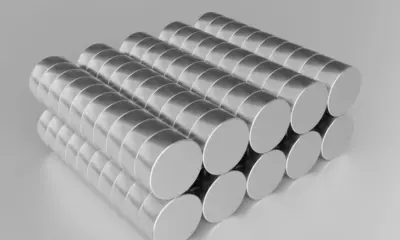Health
Seladelpar Emerges as Key Treatment for PBC After Obeticholic Acid Withdrawal

The therapeutic landscape for patients with primary biliary cholangitis (PBC) has undergone a significant shift following the voluntary withdrawal of obeticholic acid from the U.S. market in September 2025. For years, obeticholic acid served as the only second-line treatment option for patients who could not tolerate the first-line therapy, ursodeoxycholic acid. The recent absence of this medication has created a considerable gap in treatment options.
In 2024, two new second-line therapies, seladelpar and elafibranor, were introduced, offering hope to patients affected by the withdrawal of obeticholic acid. At the American Association for the Study of Liver Diseases (AASLD) The Liver Meeting 2025, Dr. Christopher Bowlus, the Lena Valente Professor and Chief of the Division of Gastroenterology and Hepatology at the University of California Davis School of Medicine, presented critical real-world data. This data supports the efficacy and safety of seladelpar, particularly for patients making the switch from obeticholic acid.
Historical Context of PBC Treatment
Dr. Bowlus highlighted the historical significance of obeticholic acid since its accelerated FDA approval in 2016. Prior to its introduction, the only available treatment for PBC was ursodeoxycholic acid, which left many patients without effective options. “It had been more than 20 years since that approval, and there were 40 to 50% of patients that we knew did not have an optimal response and remained at risk of disease progression,” he stated.
The introduction of obeticholic acid was a vital step in addressing this therapeutic gap. Despite its benefits, some patients experienced adverse effects, notably itching, which limited its widespread use. Concerns about safety, especially in patients with advanced disease, further complicated its acceptance. Ultimately, the decision to withdraw obeticholic acid from the market left many patients needing alternative therapies.
Seladelpar’s Role in the Evolving Landscape
The approval of seladelpar as a second-line therapy has emerged as a crucial development. Dr. Bowlus explained that seladelpar not only appears to have similar efficacy to obeticholic acid but may also provide additional benefits. Unlike obeticholic acid, seladelpar has been shown to alleviate itching, a common and distressing symptom for many PBC patients.
The research presented by Dr. Bowlus at AASLD focused on a large administrative database of patients who transitioned from obeticholic acid to seladelpar. The results indicated that patients maintained their biochemical responses after switching, with some even experiencing improvements in alkaline phosphatase levels. “This suggests that patients currently on obeticholic acid can switch to seladelpar and expect similar, if not better, outcomes in terms of their biochemistries,” he noted.
Despite this progress, Dr. Bowlus acknowledged that uncertainties remain regarding the long-term effects of these therapies. There are questions about their ability to demonstrate long-term efficacy in preventing clinical outcomes, which had been a challenge for obeticholic acid. While seladelpar shows a good safety profile and efficacy in improving key health markers, some patients continue to face the risk of disease progression.
Furthermore, although seladelpar improves itching for many patients, it does not eliminate it entirely. Dr. Bowlus emphasized the ongoing need for additional treatment options, particularly third-line therapies, to better address the diverse symptoms and challenges faced by PBC patients.
As the PBC treatment landscape continues to evolve, seladelpar’s introduction marks a significant advancement in care options. With the support of recent clinical findings, patients now have a promising alternative following the withdrawal of obeticholic acid. The growing body of evidence surrounding seladelpar’s effectiveness offers renewed hope for those navigating the complexities of primary biliary cholangitis.
-

 Health2 weeks ago
Health2 weeks agoInnovative Surgery Restores Confidence for Breast Cancer Patients
-

 Top Stories2 weeks ago
Top Stories2 weeks agoMarc Buoniconti’s Legacy: 40 Years Later, Lives Transformed
-

 Sports4 weeks ago
Sports4 weeks agoSteve Kerr Supports Jonathan Kuminga After Ejection in Preseason Game
-

 Entertainment4 weeks ago
Entertainment4 weeks agoZoe Saldana Advocates for James Cameron’s Avatar Documentary
-

 Science4 weeks ago
Science4 weeks agoChicago’s Viral ‘Rat Hole’ Likely Created by Squirrel, Study Reveals
-

 Politics4 weeks ago
Politics4 weeks agoDallin H. Oaks Assumes Leadership of Latter-day Saints Church
-

 Business4 weeks ago
Business4 weeks agoTyler Technologies Set to Reveal Q3 2025 Earnings on October 22
-

 Business3 weeks ago
Business3 weeks agoZacks Research Downgrades Equinox Gold to Strong Sell Rating
-

 Lifestyle4 weeks ago
Lifestyle4 weeks agoKelsea Ballerini Launches ‘Burn the Baggage’ Candle with Ranger Station
-

 Business3 weeks ago
Business3 weeks agoBusiness Schools Urged to Prioritize Economic Freedom Education
-

 Top Stories2 weeks ago
Top Stories2 weeks agoBOYNEXTDOOR’s Jaehyun Faces Backlash Amid BTS-TWICE Controversy
-

 Health2 weeks ago
Health2 weeks ago13-Year-Old Hospitalized After Swallowing 100 Magnets









